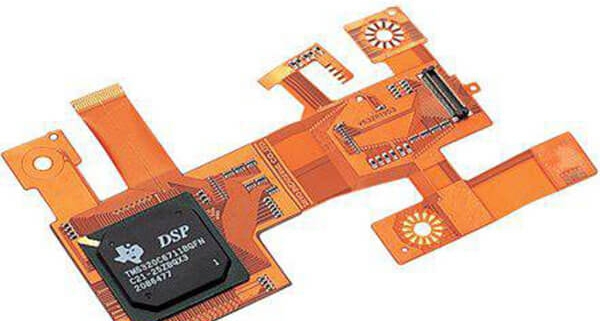Understanding Flexible Printed Circuit Boards (FPCBs)
Understanding Flexible Printed Circuit Boards (FPCBs)
Flexible Printed Circuit Boards (FPCBs) are the backbone of modern flexible electronics. These boards are crafted by mounting electronic components onto flexible plastic substrates, including polyimide, PEEK, and transparent conductive polyester. FPCBs offer unparalleled advantages, such as exceptional flexibility, reduced weight, and minimal thickness, making them indispensable in contemporary electronics.
Key Components of a Flexible PCB (FPCB)
Similar to rigid PCBs, FPCBs come in single-layer, double-layer, or multi-layer configurations, comprising crucial elements:
Dielectric Substrate Film: Serving as the PCB’s foundation, polyimide (PI) is the most prevalent material, known for its impressive resistance to both tension and high temperatures.
Electrical Conductors: Copper is utilized for these conductors, delineating the circuit’s traces.
Protective Finish: A protective layer, crafted from cover lay or cover coat, safeguards the circuit.
Adhesive Material: Typically made from polyethylene or epoxy resin, this material bonds different circuit components.
Expanding the Possibilities with FPCBs
Can FPCBs revolutionize the entire electronics industry? The answer is a resounding “potentially.” While flexible displays have piqued our interest, their widespread adoption has encountered some roadblocks.
Challenges and Considerations
Designers have explored using FPCBs as substrates for motherboards, yet certain limitations persist:
Cost Increase: FPCBs can be costlier than their rigid counterparts.
Handling Risk: These boards are more susceptible to damage during handling and use.
Assembly Complexity: The assembly process can be intricate.
Repair and Rework Challenges: Fixing issues in FPCBs can be challenging or even impossible.
Panel Utilization: FPCBs often result in reduced panel utilization, increasing costs.
Despite these challenges, FPCBs play a vital role as connectors in various applications with specific demands for flexibility, space constraints, and efficient production. Consumer electronics like cell phones, cameras, and personal entertainment devices have readily embraced flexible circuits. Industrial and medical devices also leverage FPCBs, benefiting from their compact interconnections.
Flexible PCBs have ushered in a new era of electrical interconnection technology. Their continuous growth is driven by the demand for smaller, lighter electronic devices. These boards have the power to eliminate the need for traditional connectors and cables, enhancing connection reliability while reducing assembly time, costs, and overall device size.
However, designers must navigate the challenges posed by FPCBs. While they unlock exciting possibilities, careful consideration of their disadvantages is essential. As scientists and designers work tirelessly, we can expect FPCB technology to reach its full potential in the evolving landscape of electronics.



